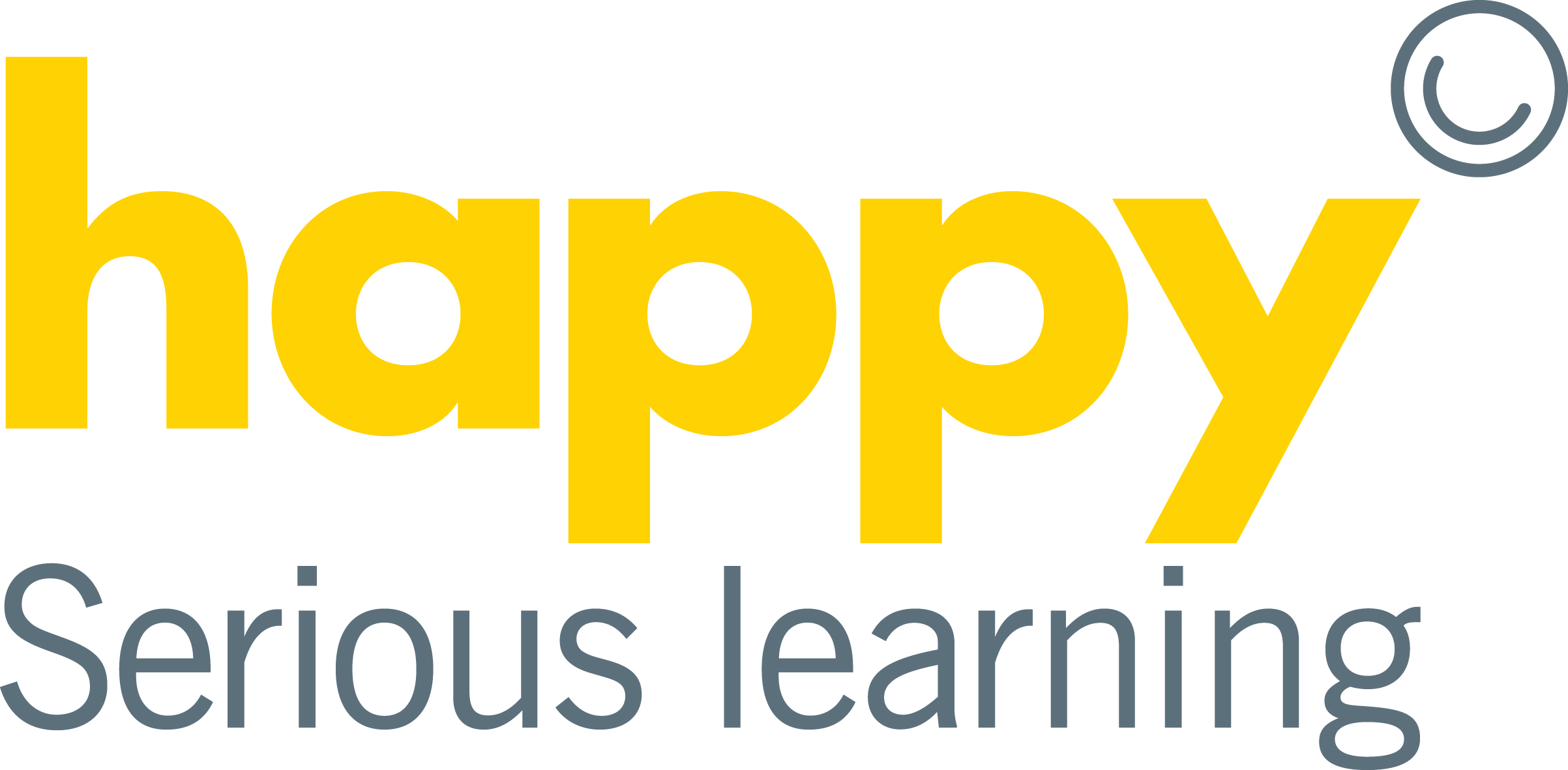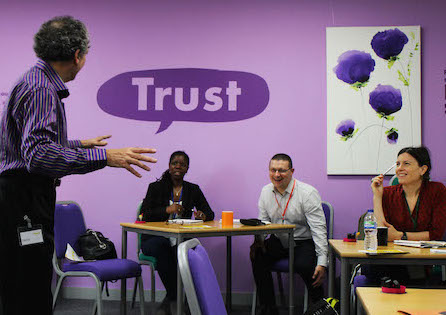 Henry Stewart’s number one ambition for his company is a big one: “To change the way people work in this country,” he says. “I want to make happier, more productive workplaces.”
Henry Stewart’s number one ambition for his company is a big one: “To change the way people work in this country,” he says. “I want to make happier, more productive workplaces.”
Stewart is the founder and CEO of Happy, a learning and development organisation that has been going for 25 years. Originally called Happy Computers, there are two arms to the organisation: people and IT. Happy People is the arm to do with creating happy workplaces through management techniques and personal development and Happy Computers is the arm focusing on IT.
Being happy and productive at work
Stewart and his team firmly believe that people are at their most productive when they are happy at work. On Happy’s website, there are four core values listed that Stewart says are essential for a happy, productive workforce.
Those core values are:
- People want to learn
- Fear of failure stops us from trying
- People work best when they feel good about themselves
- Nobody is deliberately ‘stupid’
- Customer challenges
A lot of Stewart’s customers come to him because people in their workforce are stuck and are held back by processes and rigid management structures. The challenge for Happy is to clear away those processes and structures and motivate people to be the best they can be. “But I don’t like to call it challenges,” says Stewart. “I like to call it exciting adventures.”
Stewart says they have an exciting and disruptive approach. “We find out about the organisation, we talk with senior management, maybe do a survey,” says Stewart. “We look at how to change and do things differently, from senior management downwards. What we want is to help people do what they are good at.”
How?
 Stewart thinks a key element is empowering people and allowing them to have autonomy. “When we first see people, they often come with lots of barriers. They are busy but not very productive. They feel that they can’t do anything, that it’s all done to them, even senior management. Then, through our work, people become more productive but less busy. They start to feel empowered and like that they can change things.”
Stewart thinks a key element is empowering people and allowing them to have autonomy. “When we first see people, they often come with lots of barriers. They are busy but not very productive. They feel that they can’t do anything, that it’s all done to them, even senior management. Then, through our work, people become more productive but less busy. They start to feel empowered and like that they can change things.”
Stewart says people need clear guidelines at work, but then they need to have autonomy to make their own decisions, to be enabled to do what they are good at and know they will not be blamed when things go wrong. Then there’s good management practice such as enabling staff to work flexibly. A lot of it, Stewart says, comes down to commonsense, but commonsense is easily overlooked.
How long does that process take? The minimum timeframe is six months for a core Happy course, but timescales really depend on the size of the organisation involved. “For a big council it will probably take years,” says Stewart. The success, scale and speed of the transformation is partly dictated by who is driving it – if it comes from the top and that person genuinely wants to change the organisational culture, then Happy says the initiative will be successful.
Having been doing this for 25 years, it would be easy for Stewart to sit back and rest on his laurels. However, he is continually looking for new ideas and checking out how other companies are innovating. “I’m off to look at Toyota soon to see what they are doing,” he says. “I am always looking at the best stuff out there and am going on Next Jump’s leadership academy to see how they do things.” Feedback from Happy customers is also very important to Stewart.
If Stewart is to achieve is aim of changing the way we work in this country, he needs to raise Happy’s profile. “At the moment we are known by a relatively small number of people,” he says. “We would like to be known far and wide.”
Right now, Stewart is focusing on Happy’s online activities. He wants to connect the network of Happy workplaces through an online, collaborative platform. Stewart had been using Moodle, but it wasn’t delivering. “It’s got a huge capability but it was a pain in the neck getting people to use it. We needed something that was easier for users.”
Noddlepod
At this year’s L&D conference Learning Live, Stewart came across Noddlepod. Stewart liked the look and feel of it. “It is warm and welcoming, looks fun and easy to use. That is what we needed.”
Happy has only been signed up to Noddlepod for a short while, but Stewart has high hopes for what it will deliver. Happy customers will be invited into the space where they can then discuss ideas, problems and solutions and build a strong community. Initially, the plan is to start with 20 people, but ultimately, Stewart wants a community that stretches into the hundreds or even thousands.
Stewart knows it is something that organisations want and need. “It’s been a good point in pitches to clients, but we have often found that the pitch doesn’t get used. That’s because Moodle has been hard to use.” Stewart hopes that Noddlepod will deliver what it needs to deliver: an online community that grows and thrives together, a buzzing network of Happy workplaces.
---
Henry and Happy Ltd is part of a growing network of Noddlepod accredited partners. These are independent freelancers and consultancy businesses who support Noddlepod's customers in getting maximum value from Noddlepod as an enabling platform.
See the full list of accredited partners here.
Photo credit to Gabriel Stewart and Happy ltd.